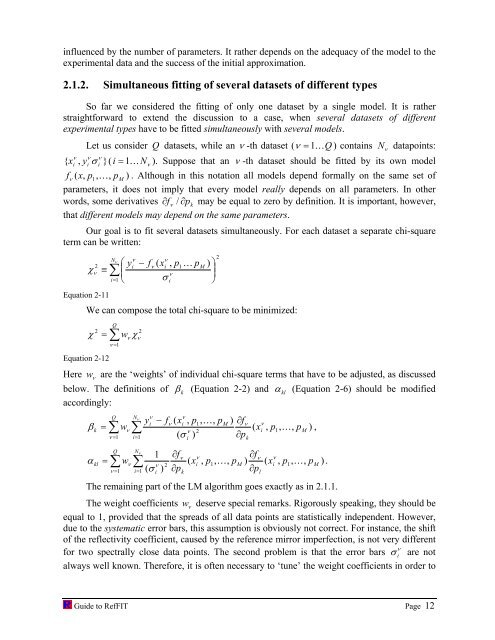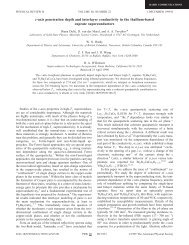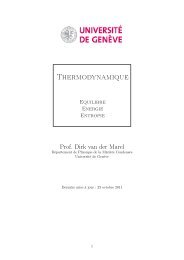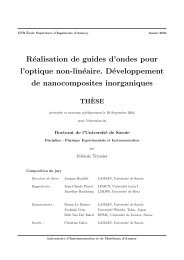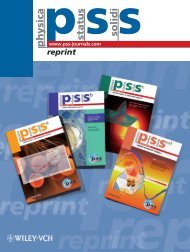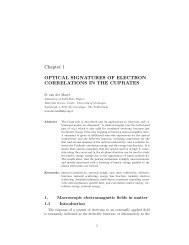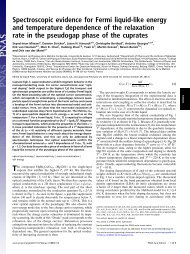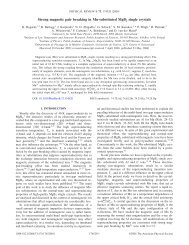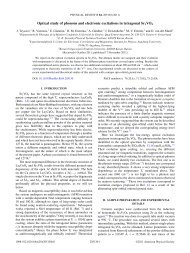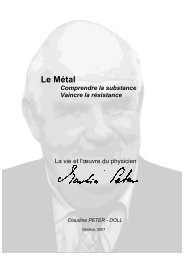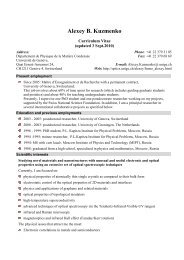software to fit optical spectra - Quantum Materials Group
software to fit optical spectra - Quantum Materials Group
software to fit optical spectra - Quantum Materials Group
You also want an ePaper? Increase the reach of your titles
YUMPU automatically turns print PDFs into web optimized ePapers that Google loves.
influenced by the number of parameters. It rather depends on the adequacy of the model <strong>to</strong> the<br />
experimental data and the success of the initial approximation.<br />
2.1.2. Simultaneous <strong>fit</strong>ting of several datasets of different types<br />
So far we considered the <strong>fit</strong>ting of only one dataset by a single model. It is rather<br />
straightforward <strong>to</strong> extend the discussion <strong>to</strong> a case, when several datasets of different<br />
experimental types have <strong>to</strong> be <strong>fit</strong>ted simultaneously with several models.<br />
Let us consider Q datasets, while an ν -th dataset ( ν = 1KQ<br />
) contains N ν datapoints:<br />
ν ν ν<br />
{ x i , yi<br />
σ i } ( i = 1K<br />
Nν<br />
). Suppose that an ν -th dataset should be <strong>fit</strong>ted by its own model<br />
fν ( x,<br />
p1,<br />
K,<br />
pM<br />
) . Although in this notation all models depend formally on the same set of<br />
parameters, it does not imply that every model really depends on all parameters. In other<br />
words, some derivatives ∂ fν / ∂pk<br />
may be equal <strong>to</strong> zero by definition. It is important, however,<br />
that different models may depend on the same parameters.<br />
Our goal is <strong>to</strong> <strong>fit</strong> several datasets simultaneously. For each dataset a separate chi-square<br />
term can be written:<br />
χ<br />
Equation 2-11<br />
⎛ y − f<br />
⎝<br />
( x , p K p<br />
≡ ∑ ⎜<br />
=<br />
ν N ν<br />
ν<br />
2<br />
i ν i 1<br />
ν<br />
ν<br />
i 1 σ i<br />
M<br />
) ⎞<br />
⎟<br />
⎠<br />
We can compose the <strong>to</strong>tal chi-square <strong>to</strong> be minimized:<br />
2<br />
χ<br />
=<br />
Equation 2-12<br />
Q<br />
∑<br />
ν = 1<br />
w<br />
2<br />
ν χν<br />
2<br />
Here w ν are the ‘weights’ of individual chi-square terms that have <strong>to</strong> be adjusted, as discussed<br />
below. The definitions of β k (Equation 2-2) and α kl (Equation 2-6) should be modified<br />
accordingly:<br />
Q Nν<br />
ν<br />
ν<br />
yi<br />
− fν<br />
( xi<br />
, p1,<br />
K, pM<br />
) ∂fν<br />
ν<br />
β k = wν ∑<br />
( x , 1,<br />
,<br />
2<br />
i p K p<br />
ν<br />
( σ ) ∂p<br />
∑<br />
ν = 1 i= 1<br />
i<br />
k<br />
Q Nν<br />
1 ∂fν<br />
ν<br />
∂fν<br />
ν<br />
α kl = ∑ wν ∑ ( x , 1,<br />
, ) ( , 1,<br />
, )<br />
2<br />
i p K pM<br />
xi<br />
p K pM<br />
.<br />
ν<br />
ν = 1 i= 1 ( σ i ) ∂pk<br />
∂pl<br />
The remaining part of the LM algorithm goes exactly as in 2.1.1.<br />
The weight coefficients w ν deserve special remarks. Rigorously speaking, they should be<br />
equal <strong>to</strong> 1, provided that the spreads of all data points are statistically independent. However,<br />
due <strong>to</strong> the systematic error bars, this assumption is obviously not correct. For instance, the shift<br />
of the reflectivity coefficient, caused by the reference mirror imperfection, is not very different<br />
for two <strong>spectra</strong>lly close data points. The second problem is that the error bars ν<br />
σ i are not<br />
always well known. Therefore, it is often necessary <strong>to</strong> ‘tune’ the weight coefficients in order <strong>to</strong><br />
Guide <strong>to</strong> RefFIT Page 12<br />
M<br />
) ,


